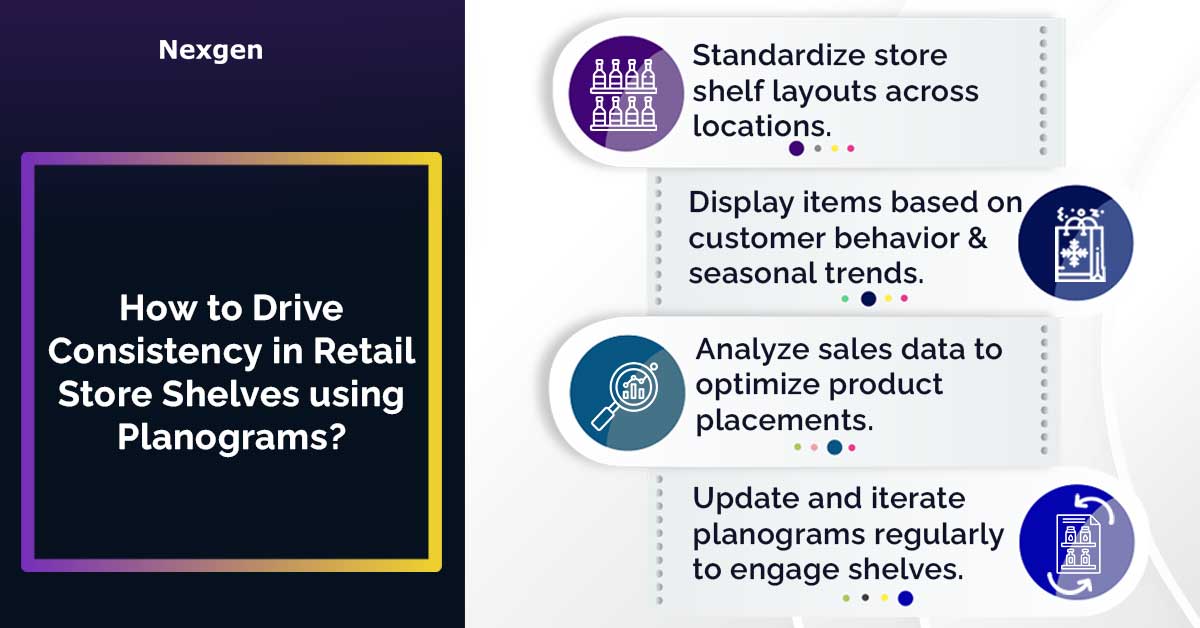In retail, where first impressions matter most and customer loyalty is earned through seamless experiences, consistency is key. The thread connects a store's identity, creates trust among customers, and drives sales.
From optimizing shelf space to capitalizing on consumer insights, shelf planning software, such as planograms, serve as the cornerstone of a successful retail strategy, ensuring stores stand out in a crowded marketplace and leave an impression on shoppers. It dictates how products are arranged on store shelves, ensuring optimal visibility, accessibility, and aesthetic appeal. By harnessing the power of precision through strategic planogramming, retailers can elevate the shopping experience, foster customer loyalty, and drive sales in ways previously thought unimaginable. Whether it is a grocery aisle, a clothing rack, or a display window, planograms provide retailers with a blueprint for organizing their merchandise in a way that resonates with their target audience. Following are some planogram ways to maintain consistency on store shelves:

- Consistency builds confidence: When customers walk into a store and find the items, they are looking for exactly where they expect them to be, which instills a sense of reliability and trust. Planograms play a crucial role in maintaining this consistency by standardizing the layout of store shelves across different locations, ensuring a uniform shopping experience that transcends geographical boundaries.
- Enhancing the shopping experience: Consistency is not just about placing products in the same spot every time; it is about enhancing the overall shopping experience. By strategically arranging merchandise according to customer behavior, seasonal trends, and promotional campaigns, planograms can guide shoppers through the store with ease, encouraging exploration and discovery along the way. This not only increases the likelihood of a purchase but also ensures a deeper connection between the customer and the brand.
- Driving sales through optimization: Beyond aesthetics and organization, planograms are powerful tools for driving sales. By analyzing sales data, inventory levels, and customer preferences, retailers can design their planograms to optimize product placement for maximum impact. Whether it is highlighting best-selling items, cross-merchandising complementary products, or capitalizing on impulse buys, planograms empower retailers to make data-driven decisions that drive revenue growth.
- Adapting to change: In today's retail environment, adaptability is essential. Consumer preferences evolve, market trends shift, and new products enter the market—all of which require a specific approach to planogram management. Fortunately, modern planogram software solutions offer retailers the flexibility to quickly update and iterate their layouts in response to changing circumstances, ensuring that their shelves remain relevant and engaging.
Overview of Nexgen POG
Nexgen POG is a robust and user-friendly cloud-based visual merchandising tool. It is designed for quick and efficient planogramming with minimal effort. Planogram in retail can be designed by easily dragging and dropping the products. The multi-device compatibility feature of POG allows you to obtain, share and edit planogram on any device, including your phone. It helps in designing store-specific planograms for increased product visibility and sales.
Get Your Free Trial Now!